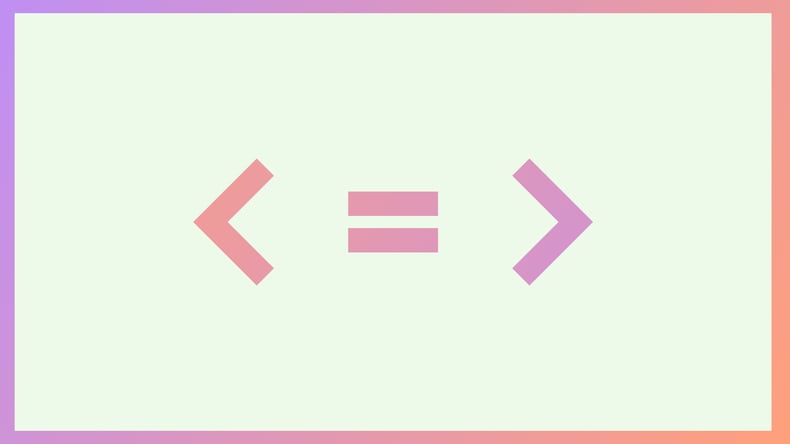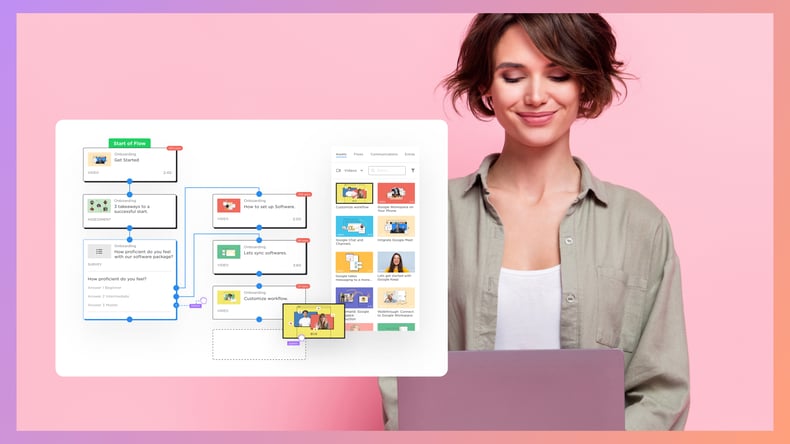In today’s world, companies rely more than ever on their software to successfully operate and get the job done. And after they spend significantly on their software licenses, they expect to see tangible value and business results.
To establish a clear ROI, software vendors and their clients are leaning heavily on Customer Success Managers (CSMs). CSMs are tasked with helping clients adopt their product, monitor usage, and measure business results.
The CSM role has become so critical, in fact, that an entirely new product category has emerged to support it.
And it’s not slowing down anytime soon:
“The global customer success platform market size is estimated to rise from $13.5MM in 2022 to $54.3MM by 2028, growing at a CAGR of 26.10% over the forecast period of 2023-2028.” 1
The market is flooding with solutions that deliver client telemetry, engagement tracking, faster onboarding, resource hubs, and more.
Across the range of those solutions, we see that the customer success tech stack was built to help SaaS companies to:
-
-
- Know which clients might leave,
- Understand why those clients are leaving, and
- Help CSMs to intervene sooner
-
But is eliminating churn really the answer to retention?
What if we’re solving the wrong problems?
Greg Daines, CEO of ChurnRX, has said, “You don't solve churn by thinking of it as a problem, but by solving the customer's problem for which churn is the solution.” 2
The truth is that the customer success tech stack was built to solve your problems (engagement, churn, expansion etc.) rather than your clients’ problems.
That just doesn’t work.
Instead of solving your problems (as a CS team and software vendor), you need to solve your customers’ problems. You need to show that the problems your customers procured you to solve are actually being addressed.
SaaS companies spend $13.5MM/yr (and growing) on products built to solve problems that wouldn’t exist if they could simply deliver the right solution in the first place.
So, it’s time to challenge your assumptions about churn and retention.
Don’t remediate churn. Prevent it.
To really understand what your clients need from you, you need to 1) meticulously study what your clients are saying and 2) prioritize ruthlessly based on data.
We’ve done some of the heavy lifting for you to give you a head start.
Six clear themes emerged from our research.
Here are the 6 ways software clients say their vendors miss the mark.
%20.jpg?width=790&height=444&name=You%E2%80%99re%20one%20in%20a%20million%20(a.k.a.%20You%E2%80%99re%20JUST%20one%20in%20million)%20.jpg)
1. You’re one in a million (a.k.a. You’re JUST one in million)
Understanding that your software is just one piece of the larger puzzle is crucial. Your customers engage with numerous vendors, each providing essential tools. Attending quarterly business reviews with every vendor is unrealistic, and having a unique success strategy for each product they manage is impossible. Customers need a way to build a unified success strategy that encompasses all the software they license.
Larger companies (2k+ employees) deploy an average of 187 apps, and often many more than that. 3
Andrea Nottingham, the former CTO Manager of End User Experience at PepsiCo stated:
“If I attended every QBR with every vendor we had, that would have consumed all my time. You just don’t have the bandwidth to build a unique success strategy with each CSM you work with or complete all the things your CSM asks you to do. If I’m going to prioritize what a CSM is asking me to do, I need compelling data that shows me how this will help my company and my users along with an easy way to execute those strategies.”

2. When it comes to onboarding, less is more:
During onboarding, too many details are overwhelming and counterproductive.
“We see customers that will purchase. And then for the first four months, they haven't used or even touched our software. And that's the worst thing that you could see.”
Sr. Director of Global Customer Success
B2B SaaS Cloud Storage ($1BB valuation)
Focus on enabling customers with what they really need to perform a successful rollout. They have limited time, and spending hours learning non-critical information is a frustrating customer experience. Prioritize and tailor your onboarding process to help them make the most of their time, and get their users active right away. If you do this, there’s a much higher chance they’ll engage quickly.
3. Your training content is impressive, but unusable:
While your content might be comprehensive and well-produced, the usability of this content is equally important. End users are time-strapped, and they struggle to find relevant information spread across various sources. It’s also not their top priority.
This means that training often looks more like support - passive and reactive. When customer admins have to rely on a unique learning portal for every vendor they work with, they often become a bottleneck between their vendors and their users. Work within the vendor ecosystem to streamline access to information.
The evidence is strong for this on both sides of the relationship:
Gavin Joye, IT Systems Admin at Imagine360 lamented the following:
“Each vendor has their own training on their own site, or they might post it to YouTube. While each has positives and negatives depending on how their site is structured or whether logins are needed, it’s very difficult to track or remember to go to their individual sites for training. Plus, I have no idea who’s doing training on what apps; HR has no idea. Their manager has little to no idea. Users need to have multiple accounts on multiple sites and then they also need to remember to bookmark those for each application. So often, they come to me one at a time and ask, ‘Where do I go for training on this app?’ Then, it’s up to me to go and find that information, or I have to request it from my CSM because I don’t recall where to go either.”
SaaS leaders feel it, too. We chatted with the Global Training Implementation Manager who oversees implementation for clients of a $500MM risk management platform. She shared the following:
"This has been the hurdle in my entire experience with the training team – we produce so much first-class training, whether it's an article or an e-workbook or a video, but users don't really know how to get there."
4. Don’t just teach how. Teach when and why:
Training on product features falls short when it lacks context. Users don't remember features; they remember solutions to their pains and problems. Help customers guide their users on which tool to use, when to use it, and why it’s the best option. It's about fostering deeper adoption and positive sentiment around their tech stack, which contributes to tangible business value.
It’s been proven many times that people learn and retain content best when they have a personal interest in the topic. Makes sense, right? People learn the best when they care the most.4
So, what do you do when you know users don’t personally care about what you’re trying to teach them, but you need them to learn it anyways? Our own personal interests don’t always align with the learning outcomes placed before us (by our employer, educator, … or even parent.)
Equipping your clients to create situational interest for their users is key.
Situational interest: Temporary interest that arises spontaneously due to environmental factors such as task instructions or an engaging text. 5
If you can create situational interest, you can spur personal interest.
This matters a lot; learners’ levels of interest in a topic strongly correlate with their achievement in that topic. 5
So, we should do our best to provide resources to our clients that create situational interest for their end users. Make sure your content strategy is designed to create situational interest.
- Instead of comprehensive, make it contextual
Why or when should I do this? - Instead of focusing on task completion, show users WIIFM
What’s in it for me? - And instead of focusing on feature walkthroughs, build features into jobs-to-be-done frameworks
What does this feature help me do better?

5. Deputize your clients as your product marketers:
Start with the data
When a customer submits a request for communications to go out to their users, they need data to demonstrate the need and value of the emails. They need data like typical open rates and click rates to prove that you (the vendor) aren’t spamming their employees.
Equip them with compelling messages
All of your clients’ vendors are asking them to message their end users. Customers don’t want to barrage their users with unnecessary information. And your primary client contact isn’t typically a marketing or comms expert; they’re an IT or experience leader.
Help your contacts by providing them with well-crafted, value-centric communication resources. Collaborate with them to ensure that their users receive communications that genuinely matter to them.
Let the customer be the sender
Your product marketing emails often go unnoticed by end users. They’re filtered out as spam and ignored. If the customer sends these emails from a recognized name in their organization, open rates will be much higher. Collaborate to personalize and target communications effectively. By deputizing your customer as your internal advocate, you can ensure that users are more engaged with the information you share.

6. Be an expert, not a friend:
As their partner in success, challenge your customer. Provide prescriptive guidance and hold them accountable. Customers resoundingly shared that their CSMs’ insights into what it takes to succeed with their product are invaluable to them.
Customers want to be successful with your product. After all the work and resources they’ve invested to select and implement your product, they don’t want to cancel. But, they also experience pressure to reduce duplicate apps and cut down on spend wherever they can. Your admin is a hero when they save their company money. And they simply can't champion your product without concrete data to show its value.
Establish metrics from day one and consistently monitor progress together. Push customers to prioritize these metrics; it will be a testament to your confidence in your product's impact.
A great CSM can be a true partner in making sure that a software product adds real value to a business. And yet – even CSMs receiving the highest client praise see just as much churn as others.
In fact, there is ZERO correlation between a client’s NPS ratings and whether or not they renew.
“Using our huge customer data set we tested the relationship between customer satisfaction and loyalty, and the results are stunning. Using customer Net Promoter Scores (NPS) we consistently find that there's literally no statistical correlation between NPS and how long customers stay.” 6
On their quest to become a client’s champion and trusted advisor, CSMs mistakenly equate high client satisfaction levels with their retention likelihood. Then, they’re caught off guard when clients deliver the blow that they won’t be renewing. Sound familiar?
While it may not be intuitive, the fact is that happy clients aren’t retained clients.
So, what’s the bottom line?
According to the hundreds of SaaS clients we’ve spoken with, here’s what you should stop doing, and start doing, right away:
Stop:
- Teaching clients about all the latest features in your product
- Trying to reach users through product marketing email campaigns
- Surrounding clients with a large library of resources
- Holding QBR’s that are just client temperature checks
- Focusing on keeping clients happy (increasing your NPS scores)
Start:
- Developing an active listening skillset to help you identify client priorities
- Giving clients turnkey communication plans and templates
- Discovering and measuring your client admin’s own scorecard and metrics
- Regularly reviewing established success metrics, targets, and progress
- Challenging your clients to push end-user adoption efforts with compelling data
We’re here if you need help
BrainStorm is the software adoption platform that drives radical alignment between software vendors and their clients.
With BrainStorm, unlock customer-led product adoption by giving each of your clients their own LMS – that you globally manage. Upload all of your email templates, comms plans, PDFs, and video-based learning paths right into your clients’ portal.
It's time to make it ridiculously easy for your clients to drive successful end-user adoption.
Where next?
Learn more
Subscribe to our blog
Follow us on Linkedin
Schedule a demo
Conclusion
The role of the Customer Success Manager is critical, but understanding the nuances of customer needs is equally essential. By considering these 6 insights, CSMs can forge stronger relationships, drive deeper adoption, and truly become champions of their customers' success. Collaboration, personalization, and strategic guidance are the keys to a successful partnership that benefits both parties.
Citations
- Customer Success Platform Market Report, Size, Price, Analysis 2023-2028 (expertmarketresearch.com)
- https://www.linkedin.com/posts/gregdaines_customersuccess-customerexperience-saas-activity-7083158477598068736-8b4b
- Businesses-at-Work-2022-Annual-Report.pdf (okta.com)
- Increasing Situational Interest in the Classroom, Schraw, Flowerday & Lehman, 2001
- The Four-Phase Model of Interest Development, Hidi & Renninger, 2006
- New Research Proves Customer Happiness Doesn't Pay (gregdaines.com)


